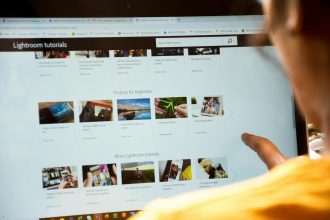student-loan-forgiveness
Student Loan Forgiveness: 7 Key Programs Resuming Now
The weight of student loan debt can feel crushing, impacting financial freedom and future plans for millions. For many borrowers, the news that the Department of Education is resuming key initiatives related to Student Loan Forgiveness comes as a significant beacon of hope. This isn’t just a minor adjustment; it’s a critical moment for understanding and leveraging the pathways to debt relief that are now actively back on the table, including popular plans like Income-Based Repayment (IBR) and Pay As You Earn (PAYE).
Understanding Student Loan Forgiveness Initiatives
Student Loan Forgiveness refers to the cancellation of some or all of a borrower’s federal student loan debt. This relief isn’t automatic; it’s typically tied to specific programs, circumstances, or repayment behaviors. The recent resumption of these programs signifies a renewed commitment from the Department of Education to help borrowers navigate their financial obligations.
What is Loan Forgiveness?
Loan forgiveness means you are no longer required to make payments on certain federal student loans. It’s distinct from deferment or forbearance, which only temporarily pause payments. Forgiveness permanently erases the debt, offering a fresh start for eligible individuals.
Why is it Resuming Now?
After a period of administrative pauses and adjustments, the Department of Education is actively processing applications and restoring benefits for various forgiveness programs. This resumption aims to provide much-needed relief and clarity to borrowers who have been waiting for their eligibility to be recognized or their progress towards forgiveness to be counted.
Key Student Loan Forgiveness Programs Making a Comeback
Several vital programs are at the forefront of this renewed effort. Understanding each one is crucial for determining your potential eligibility and the best path forward for your federal student loans.
Income-Driven Repayment (IDR) Forgiveness
IDR plans adjust your monthly payment based on your income and family size. After a certain number of qualifying payments (typically 20 or 25 years), any remaining balance on your federal student loans is forgiven. The Department of Education is now rectifying past administrative errors to ensure borrowers receive proper credit towards these timelines.
- Income-Based Repayment (IBR): Payments are generally 10-15% of your discretionary income.
- Pay As You Earn (PAYE): Payments are generally 10% of your discretionary income.
- Revised Pay As You Earn (REPAYE), now SAVE Plan: Payments are generally 10% of your discretionary income, with expanded benefits.
- Income-Contingent Repayment (ICR): Payments are either 20% of your discretionary income or what you’d pay on a fixed 12-year plan, whichever is less.
Public Service Loan Forgiveness (PSLF)
This program offers forgiveness for federal direct loans after 120 qualifying monthly payments while working full-time for a qualifying employer. This includes government organizations at any level, non-profits, and other public service roles. Recent changes have made it easier for more public servants to qualify.
Teacher Loan Forgiveness
Eligible teachers who work for five complete and consecutive academic years in a low-income school or educational service agency may qualify for forgiveness of up to $17,500 on their Direct Subsidized and Unsubsidized Loans and their Subsidized and Unsubsidized Federal Stafford Loans.
Total and Permanent Disability (TPD) Discharge
Borrowers who are totally and permanently disabled may be eligible to have their federal student loans discharged. This can be verified through documentation from the Department of Veterans Affairs, the Social Security Administration, or a physician.
Borrower Defense to Repayment
If your school misled you or engaged in other misconduct in violation of certain state laws, you may be eligible to have your federal student loans discharged. The Department of Education continues to process these claims.
Closed School Discharge
You may be eligible for a discharge of your federal student loans if your school closed while you were enrolled, or shortly after you withdrew. This applies to loans taken out to attend that specific school.
Other Targeted Relief Initiatives
Beyond these broad programs, the Department of Education often implements targeted initiatives to address specific borrower needs or rectifies systemic issues. Staying informed about official announcements is paramount for all borrowers.
How to Determine Your Eligibility for Federal Student Loan Forgiveness
Navigating the various criteria for Student Loan Forgiveness can be complex, but a systematic approach can help. It is essential to understand your loan types and employment history.
- Identify Your Loan Types: Only federal student loans are eligible for most forgiveness programs. Private loans do not qualify.
- Review Your Repayment History: Understand which payments count towards IDR or PSLF.
- Verify Employment (if applicable): For PSLF or Teacher Loan Forgiveness, confirm your employer and work history meet the requirements.
- Assess Personal Circumstances: Consider if you qualify for TPD or other specific discharges.
- Check Official Sources: Regularly consult the Federal Student Aid website for the most accurate and up-to-date information.
Navigating the Application Process
Once you’ve identified a program that aligns with your situation, the next step is to initiate the application process. This often involves gathering specific documentation and submitting it through official channels.
Gathering Required Documents
Depending on the program, you may need proof of income, employment verification forms, disability documentation, or records related to your school. Organize these documents thoroughly before applying to ensure a smooth process.
Where to Apply
Most applications for federal student loan forgiveness programs are submitted through the Federal Student Aid website (studentaid.gov) or directly to your loan servicer. Always use official government portals to avoid scams.
Important Considerations for Borrowers
As Student Loan Forgiveness programs resume, vigilance and proactive engagement are key. Borrowers should remain informed and critical of unofficial advice.
Staying Informed
Official announcements from the Department of Education are your most reliable source of information. Avoid relying on social media rumors or unverified news. Sign up for alerts from your loan servicer and Federal Student Aid.
Seeking Professional Advice
If your situation is particularly complex, or if you need help understanding the nuances of different repayment plans, consider consulting a reputable financial advisor or a non-profit credit counseling agency specializing in student debt.
The resumption of Student Loan Forgiveness programs by the Department of Education offers a significant opportunity for many borrowers to alleviate their debt burden. From Income-Based Repayment to Public Service Loan Forgiveness, understanding these options is the first step toward financial relief. Don’t let this opportunity pass you by; take the time to explore your eligibility and apply for the forgiveness you deserve.
Are you ready to explore your options for student loan forgiveness? Visit Federal Student Aid today to check your eligibility and take control of your financial future!
Student loan forgiveness document, student debt relief, hand holding student loan papers, financial freedom, government aid for students.





